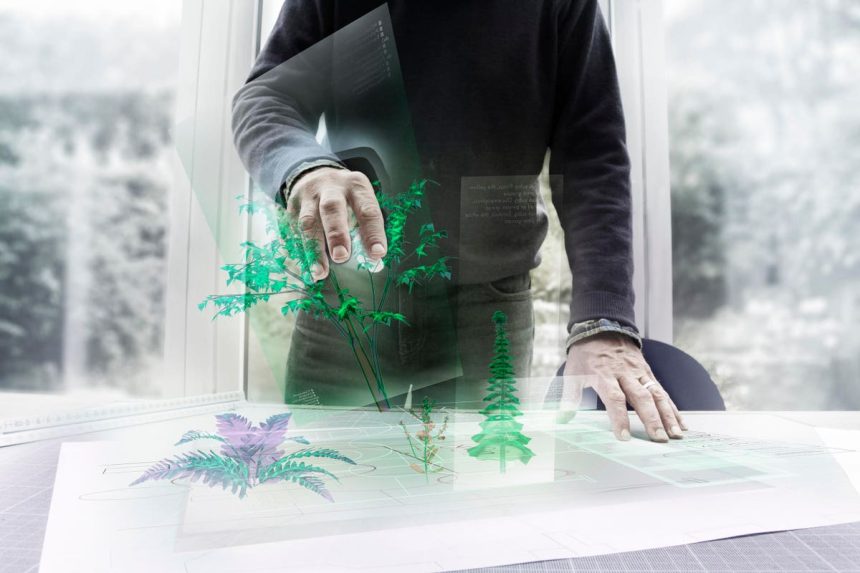Benevolent by nature, Kartik is a serial entrepreneur and a pro skydiver. He lives life king-size. Founder & MD of Smartt.Studio.
As technology advances, so does the world of digital creation. In recent times, digital realities have gained traction among tech and everyday users alike. Virtual and augmented realities are changing the way we interact with digital content and the real world.
From my perspective, the future of digital creation is looking brighter than ever with the emergence of editable reality, a technology that allows for the manipulation of virtual objects in real time. This has become an integral part of my business, and we are spending substantial effort and resources to be able to make this accessible to our clients. However, its potential has broad applications that benefit other industries as well.
To better illustrate the potential of editable reality and how it can impact your own business, first understand how it fits in with existing virtual and augmented reality technologies.
What is virtual, augmented and editable reality?
Virtual reality, known as “VR,” is a digital technology that simulates real or imaginary terrain and allows the user to interact with it as if it were real. It generally requires the use of a headset that covers the user’s eyes and might also include detectors to track their movements.
Meanwhile, augmented reality, known as “AR,” puts a computer-generated image over real-world objects. AR can often be viewed with the camera of a smartphone or tablet or with devoted spectacles.
Editable reality works in both of these spaces. It is not a platform in its own right but is a term used to describe the capability to manipulate and interact with virtual objects in real time. This capability allows users to modify and customize virtual objects in either virtual or augmented reality to suit their requirements in a way that was initially insolvable. With editable reality, users can fluently produce, edit and interact with digital objects as if they were real. It is able to do this by using a combination of advanced computer algorithms and detectors to track the movements of the user. This allows users to interact with digital objects using natural movements and gestures, making the experience feel more immersive and realistic.
What can AR and VR do?
Both VR and AR have unique advantages and can be used to enhance the user experience, as a tool for education and training, or as a way to provide more interactive entertainment. Examples of some of the ways it can do this include:
• Education: Doctors can practice surgeries in a virtual terrain, and history scholars can explore past events and places through VR and AR.
• Entertainment: Users can witness pictures, games and music in a more immersive way. AR can also produce interactive games similar to scavenger hunts and escape apartments.
• Training: VR and AR give businesses the ability to train workers in disciplines such as aeronautics, service and construction without putting the employee or expensive equipment at risk. For illustration, aviators can exercise flying in simulated terrain, and construction workers can exercise structures without the threat of injury.
• Health: Digital realities have even been used to help patients overcome certain health conditions, such as anxiety and PTSD, by providing patients with a controlled environment where they can practice coping strategies.
What is the potential of editable reality?
I believe editable reality, specifically, has the potential to revise the world of digital creation in numerous ways, including:
• Improved design and prototyping: Editable reality can allow designers to produce, edit and test their designs in a virtual environment. This could help save time and money by reducing the need for physical prototypes.
• Enhanced training and education: This technology can be used to produce immersive training and educational materials. This allows users to exercise and learn in a safe and controlled environment.
• Further interactive entertainment: Editable reality can also be used to produce further immersive and interactive entertainment. This can include videotape games, virtual reality games and more.
• Better customer experiences: Use of editable reality with AR technology can also increase revenue by minimizing costly reverse logistics. For example, retail businesses like Chanel have used the technology to create apps that allow users to try on makeup, glasses, hats and even clothing.
What are the challenges of digital realities?
Despite the numerous benefits of digital realities, it is important to note there are challenges associated with their use. For example, this technology can be expensive, which makes it inaccessible to numerous users. Cybersecurity might also be a concern. As digital realities become more popular, the threat of cyberattacks targeting these technologies increases.
The Takeaway For Businesses
I believe digital realities are transforming the way we interact with digital content and the real world. While there are challenges associated with the use of digital realities, the benefits they can provide are immense. From my perspective, editable reality, in particular, is an innovative technology that could revise how people produce and interact with digital content. As technology continues to advance, I anticipate seeing further and further innovative operations in editable reality and uses for digital realities as a whole.
Forbes Business Council is the foremost growth and networking organization for business owners and leaders. Do I qualify?
Read the full article here










